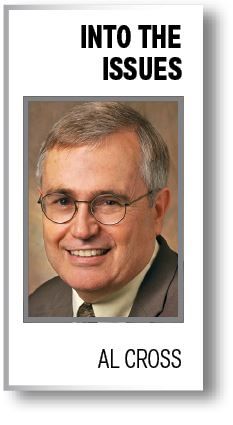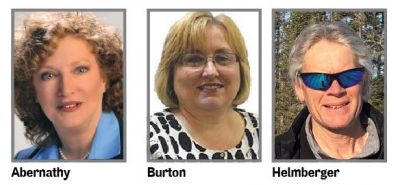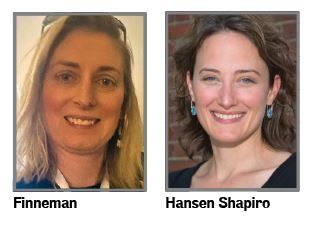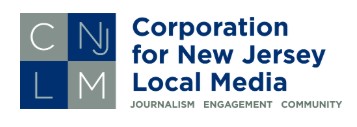National Summit on Journalism in Rural America shows good journalism is good business
Al Cross
Jul 1, 2022





“I leave hopeful for community newspapers,” one attendee said as she left the National Summit on Journalism in Rural America June 4. And there were reasons to have hope.
At a time when newspapers must get more revenue from audiences that won't pay good money for bad journalism, the Summit provided plenty of evidence that good journalism is good business, even if you're not the only paper in your market. “It's still possible to run a successful small-town newspaper, if you do it right,” said Marshall Helmberger, co-publisher of the Timberjay in Tower, Minnesota.
His co-presenter, Sharon Burton, won applause when she said, “I wish people in this business would stop writing our obituary.”
Burton publishes the Adair County Community Voice in Columbia, Kentucky. She said the county's top elected official told her that she keeps the official from doing wrong.
“I don't think that you can get a greater compliment,” she said. “And that's what we should be in our communities."
That fit a statement from the Summit's first presenter, Penny Abernathy of Northwestern University: “A strong news organization builds democracy and it builds community.”
To sustain such organizations, “There's not going to be one business model; there are going to be many,” Abernathy said. “It just depends on what kind of community you're in.”
The Summit had a research question: How do rural communities sustain local journalism that supports local democracy? The question was based on the increased need for community support for newspapers or any other form of news media in an environment where people are “bombarded with information,” as Burton described it.
Many local news media are getting more support from their communities with membership models that give subscribers extra benefits, but many publishers are reluctant to ask their readers for more. At least in the Great Plains, that attitude is off base, said Teri Finneman of the University of Kansas, reporting on her team's recent survey of publishers and readers in Oklahoma, Kansas, Nebraska and the Dakotas.
Finneman found that 40% of readers said they are likely or very likely to donate to their local paper to keep it going. She and Kansas Publishing Ventures, which publishes four weeklies, are testing that by implementing such a model later this month. "This is live, ongoing research," which should produce its first report this fall, she said.
THE STATE OF RURAL JOURNALISM
The challenges of rural journalism are mainly the challenges of the communities it tries to serve, and many of those challenges are daunting. But they are not dispositive. That was made clear by some sharp, innovative and courageous editors, publishers, academics and other journalism supporters.
“Community newspapers are still trusted” more than other news media, said NNA Executive Director Lynne Lance, citing the recent survey done for NNA in the markets of its members, mainly weeklies and small dailies.
But more broadly, when you ask how America's rural newspapers are doing, you also need to ask, and answer, this question: “How is rural America doing?” said longtime Georgia publisher Robert M. Williams Jr. “It's hard for any newspaper to ever rise above the quality of the community it operates in, but there are exceptions,” he said.
The biggest problem in most rural communities is shrinking population, and that's a problem for their news media, as well as the shift of retail business to big-box stores that advertise little, said Tony Baranowski, then co-publisher of the Times Citizen in Iowa Falls, Iowa, and now at The Gazette in Cedar Rapids.
For many older newspaper owners in small towns, the biggest problem is finding an acceptable buyer for their newspaper.
“What we see are thousands of independent owners across the country who want to leave their legacy but don't have someone to buy their paper,” said Elizabeth Hansen Shapiro of Columbia University, founder of the National Trust for Local News, which tries to keep local news media in local hands, rather than profit-motivated chains or politically motivated buyers.
Speaking of such, Burton said, “It's obvious by the quality of what they're doing that they're not in it because they love newspapering.”
Some owners who don't want to sell to such buyers just close their papers, and some such buyers eventually merge or close them, or strip them down so much they create what Abernathy calls a news desert: a community “with limited access to the sort of credible news and information that feeds democracy at the grassroots level and helps residents make wise decisions about issues that will affect their quality of life and that of future generations.”
In some cases, that means a “ghost newspaper.” In others, it means no paper at all. Abernathy, who has tracked the trend for years, said that the recent rate of mergers and closures is double what she expected, and they are now being seen in affluent communities. She is in the midst of writing an update of her research.
Social and political divisions are a growing problem for rural communities and their newspapers. Bill Horner, publisher of the Chatham News+Record in North Carolina, said is county is so divided along racial and political lines that it made him and his partners question whether it was still a place for a general-interest newspaper.
Horner said his twice-weekly lost its largest single-copy vendor (three stores, 200 papers) because his sports editor told the owner that the paper was doing a story on the history of lynching in Chatham County. But he said he continues outreach to Blacks and Hispanics, each 12 to 13% of the county's population, because sustainability relies on engagement and helping audiences solve their problems. He said one recent success is a parenting newsletter, because most people are parents, and that crosses the social and political divides.
Baranowski said, “We have to embrace immigration, refugees, wherever they're coming from.” His PowerPoint presentation said, “These are facts that are difficult for many of our overwhelmingly white communities to embrace, but we have to illustrate the successes of embracing immigrants and refugees.”
He said, “The community is not embracing their stories,” one exception being an Afghan who was an interpreter for the American military. “Never underestimate the value of people being proud of lifting up an underdog,” he said.
Dink NeSmith, a newspaper chain co-owner who came out of retirement to save The Oglethorpe Echo in northeast Georgia and made it a nonprofit staffed by University of Georgia students, said Saturday during the Summit, “We began to cover the Black community for the first time,” The county is 17% Black. He said a Black truck driver was appreciative and donated $500.
NONPROFIT OWNERSHIP MODELS
A nonprofit business model is an increasingly attractive alternative for newspapers that have seen their profit margins fall into single digits and want to be able to get grants and tax-deductible contributions. The potential of the nonprofit model for rural papers was the topic of two Summit discussions.
“We see nonprofit local news ... as a real bright spot,” said Jason Alcorn, vice president of learning and impact at the American Journalism Project, which makes grants to nonprofit news organizations, partners with communities to launch new nonprofits and coaches their leaders.
Publishers who are interested in the nonprofit model can explore it with the help of the Institute for Nonprofit News, which has more than 400 nonprofit, nonpartisan publishers doing 400,000 stories a year, said Jonathan Kealing, the organization's chief network officer.
INN publishes a conversion guide, developed with the Salt Lake Tribune, which recently went nonprofit, and a guide for nonprofit startups. It also provides advice for its members.
Shapiro told how the National Trust for Local News used philanthropic support to buy a chain of 24 community newspapers in Colorado and put them in a nonprofit. Now, she says the Trust is asking, "How can we bring rural papers together under common nonprofit ownership to share resources and increase the chances of long-term service and sustainability?"
A fundamental difference between the profit and nonprofit models is that the former is about making money and the latter is about providing public service. “Nonprofits are by law community assets” that can't be sold, and their boards are charged with acting for the benefit of the community, not the benefit of the organization, Kealing said.
A nonprofit can still make money; it just re-invests profits rather than distributing them to owners. “Nonprofit does not mean non-commercial,” Alcorn noted.
Summiteers heard about the latest move of a group of newspapers to a nonprofit. Liz and Steve Parker of the New Jersey Hills Media Group said they went nonprofit because their 14 weeklies had been making a small profit, but declining ad revenue prevented investments needed for growth, and they didn't want to sell to any of the chains that were willing to buy it.
“The options for selling were so unattractive,” Steve Parker said. His sister said most of the buyers were "bottom feeders" who would have ruined the papers, so they created the Corporation for New Jersey Local Media, using the model of the Lenfest Institute, which owns the Philadelphia Inquirer: a social benefit corporation ("B corp") that allows the papers to keep publishing editorials and anything else a paper can do, including events. The CNJLM can also take grants and tax-deductible contributions.
It can also acquire other papers, becoming an umbrella for independently operated news organizations. Amanda Richardson, executive director of the nonprofit, said it has been approached by another paper that might become part of the enterprise.
Liz Parker said the model is sort of like the people of Green Bay, Wisconsin, owning the Packers, but there is no reason that it can't work “across the country.” Her session is on YouTube. Her detailed PowerPoint presentation can be read and downloaded here: https://bit.ly/3HUIWGa.
Shapiro's presentation is here: https://bit.ly/3u5tjWX.
PHILANTHROPIC SUPPORT
Philanthropy is becoming part of the business model at many American newspapers, but not so much among rural weeklies and dailies. Rural philanthropy has always been something of an oxymoron, with most of the big money staying in big places. The Summit explored how philanthropy can help rural news outlets.
Editors and publishers at chain-owned rural papers might think that their ownership model precludes asking for philanthropic help from individuals and institutions, but one of the better examples of philanthropy helping a non-metropolitan paper is at the Traverse City Record-Eagle in Michigan, a daily owned by Community Newspaper Holdings Inc.
Nathan Payne, who recently moved from the editorship of the Record-Eagle to be the rural team editor for Kaiser Health News, discussed at the Summit how he raised support through the local community foundation, a type of philanthropy that is becoming more common in rural areas and in Traverse City. It added a trust factor to a chain paper asking for money. He said people in Traverse City see the value of “20 professional skeptics all over the community, turning over rocks” but they didn't really know the state of local journalism. This year, the paper has $15,000 from foundations, and it has expanded its coverage area to include more rural counties, a rarity today.
A similarly enlightened community is Rappahannock County, Virginia, pop. 7,400, where the weekly Rappahannock News has added muscle to its newsroom with the help of Foothills Forum, a local philanthropy created specifically to help the independently owned paper. The county "has tradition of deep civic engagement," Publisher Dennis Brack said at the Summit. He acknowledged later that its proximity to Washington, D.C., 90 miles to the east, and the presence of many retirees from D.C., also help.
The first funded project was a poll of the county, to which 42% of residents responded, saying what mattered most to them was privacy, beauty, family farms and internet and cell service. So the next project, using freelance journalists, was on the “digital dilemma;” the second was on land use, then housing. In the pandemic, the News produced a daily newsletter.
Brack said the paper and Foothills Forum are independently operated with an operating agreement that is public, along with the names of donors, but are “highly collaborative.” The only direct subsidies have been sharing the match for RFA reporter and picking up the pay for a part-timer during the pandemic.
At least one philanthropy has been created specifically for rural news: the Fund for Oregon Rural Journalism, headed by Jody Lawrence-Turner, who is also project editor at The Bulletin in Bend, whose owners founded the philanthropy. She said it was created to help rural news organizations adapt and adjust their business models, with strategic advice on digital revenue and other topics, partnerships on stories, micro-grants, talent recruitment and development.
FORJ's first big pilot project addresses a growing complaint of rural editors and publishers: They can't find qualified people who want to work in local news. One solution often suggested is developing interest and talent among students in high school or even middle school. FORJ's Future Journalists of America pilot at four high schools in Bend newsrooms hosts a lab with sessions taught by professionals in a semester-long curriculum: media literacy; professional craft; doing assignments with news staffers; a digital, district-wide publication; and exploration of sustainable business models. The overall goal is to sell "a career with a purpose, ensuring the continuation of a free democracy," Lawrence-Turner said.
OTHER SUMMIT SESSIONS
Horner teamed up with Terrence Williams of The Keene (New Hampshire) Sentinel, a daily, to discuss how they are adapting their newspapers and raising more revenue from their readers. Kentucky journalism professor Buck Ryan, who has been studying Horner’s paper, wrote up the session for The Rural Blog at https://tinyurl.com/yckuuj5x.
Burton and Helmberger’s “Good journalism is good business” session featured two editor-publishers who have hometown competition but still thrive. Helmberger said his editorials have cost the Timberjay some subscriptions, but more might have come from people appreciative of campaigns like the one that changed a law on public access to contracting between public bodies and private entities; it's called "the Timberjay law.”
“They know when it comes to our investigations, we don't play favorites,” Helmberger said. “Over time, the light bulb clicks on, and they realize newspapers can play an important role in bringing positive change to the community. ... We don't just have readers. We have engaged readers who can't wait for the next issue.” That showed when the Timberjay was the target of a frivolous lawsuit that would still take a big part of its annual cash flow to defend. Crowdfunding for the defense raised $30,000, Helmberger said.
Both Helmberger and Burton have played unusual — and probably for most journalists, controversial — roles in their communities. Helmberger is the executive of the local economic-development authority, and Burton served on the board of the local hospital that had been driven into bankruptcy by mismanagement. When the new county judge-executive asked her to serve, she had many reservations because journalists are supposed to cover news, not make it. But she agreed “because I could not think of anything more important to do as someone who loves this community and the people who made it great,” she wrote, adding that she felt she could make sure the board was more transparent than it had been. She recused herself from reporting or editing any hospital stories and had an outside professional edit them. More on Burton's exploits is at https://tinyurl.com/3abtkt6b.
Burton concluded with a personal statement that many independent editor-publishers would make, and one that could be useful in reassuring or alerting readers concerned about owners' motives: “I make money so I can be in the newspaper business. I'm not in the newspaper business to make money,” as she said most buyers of newspapers are today. “It's obvious by the quality of what they're doing that they're not in it because they love newspapering. I think they're part of our problem, because they hurt our reputation.”
At the close of the Summit, I observed that we are in a fast-moving environment in which news publishers and people who want to help them need to remain in contact, so the Institute for Rural Journalism and Community Issues will create a platform for Summit attendees and others to share information, questions and answers. And we will hold another Summit via Zoom in a few months, again focused on innovation and sustainability.
The stories from which this report is drawn are on The Rural Blog at http://irjci.blogspot.com. Video of the sessions are on YouTube at https://tinyurl.com/yc43y8uj.
Al Cross edited and managed rural newspapers before covering politics for the Louisville Courier Journal and serving as president of the Society of Professional Journalists. He is the extension professor of journalism at the University of Kentucky and director of its Institute for Rural Journalism and Community Issues, which publishes The Rural Blog at
http://irjci.blogspot.com.










